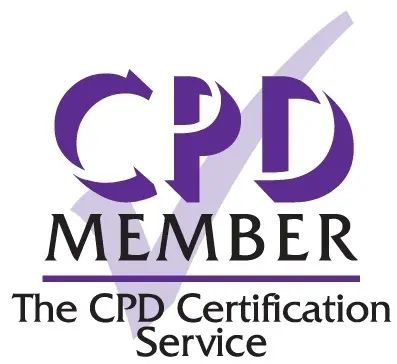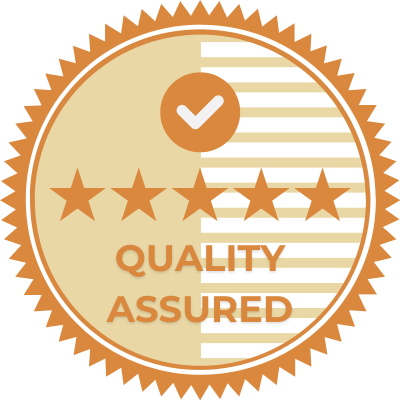Maintaining high standards of food hygiene is not only a legal requirement for food businesses in the United Kingdom, but also a moral responsibility that protects public health and preserves consumer trust. Whether you operate a bustling restaurant, manage a catering company, run a local café, or oversee a large-scale manufacturing facility, understanding and adhering to food hygiene regulations is essential. In this guide, we’ll explore the foundational legislation, responsibilities of business owners, and the key principles underlying the UK’s food safety landscape.
Introduction to Food Hygiene Regulations
Food hygiene regulations are the bedrock of the UK’s approach to ensuring safe food production, distribution, and consumption. These comprehensive frameworks apply to all food businesses, regardless of size or sector, and serve three overarching objectives:
- Preventing Foodborne Illnesses: By establishing clear handling protocols, rigorous contamination prevention measures, and staff training standards, these regulations aim to protect consumers from harmful pathogens and maintain public health.
- Ensuring Food Safety Standards: Food hygiene regulations define minimum hygiene requirements, set consistent quality benchmarks, and enforce systematic monitoring processes to ensure products meet acceptable safety levels.
- Legal Compliance: These regulations articulate explicit legal expectations, clarify the responsibilities of food business owners, and define consequences for non-compliance.
Key principles that support these objectives include maintaining clean preparation environments, implementing traceability systems, conducting regular risk assessments, ensuring proper staff training, and keeping accurate documentation. Compliance benefits a wide range of professionals—restaurateurs, caterers, manufacturers, hospitality staff, and retailers—while demonstrating a commitment to excellence and safeguarding both customers and businesses from potential risks.
Responsibilities of Food Business Owners
In the UK, food business owners hold significant legal and ethical responsibilities to maintain rigorous food hygiene standards. These responsibilities ensure that public health remains at the forefront of all operations:
- Staff Training: Owners must provide comprehensive training, maintain records, and schedule regular refresher courses so that all employees handle food safely and confidently.
- Personal Hygiene Management: Strict personal hygiene policies help guarantee that staff are appropriately attired, practice regular handwashing, and maintain impeccable cleanliness standards.
- Food Handling Procedures: Temperature controls, secure food storage protocols, and careful segregation of raw and cooked foods are fundamental practices that minimise contamination risks.
- Risk Assessment and HACCP Systems: Hazard Analysis and Critical Control Points (HACCP) frameworks help identify potential hazards and implement proactive mitigation strategies.
- Documentation and Record Keeping: Comprehensive records—training logs, inspection reports, and incident documentation—demonstrate diligence and readiness for local authority inspections.
- Premises and Equipment Maintenance: Regular cleaning, pest control measures, and proper equipment maintenance are essential to maintain a hygienic working environment.
By fulfilling these responsibilities, food business owners not only comply with legal standards but also foster a culture of safety that protects consumers and employees alike.
Key UK Food Hygiene Regulations
The UK’s food hygiene regulations are anchored by several critical pieces of legislation:
- Food Safety Act 1990
- Food Standards Act 1999
- General Food Law Regulations 2002
- Food Hygiene Regulations 2006
- Food Safety and Hygiene (England) Regulations 2013
These regulations share common principles: safeguarding consumer health, ensuring safety throughout the food supply chain, establishing clear hygiene standards, mandating proper handling procedures, and requiring traceability. Compliance is enforced through local authority inspections, penalty notices, improvement orders, and, in severe cases, prosecution.
The Food Safety Act 1990
A cornerstone of UK food safety legislation, the Food Safety Act 1990 sets the legal foundation for ensuring that all food placed on the market is safe for human consumption. Key provisions include:
- Prohibiting the sale of unsafe or contaminated food
- Requiring businesses to ensure their food is fit for consumption
- Holding producers, manufacturers, and retailers legally accountable
Penalties for non-compliance can be severe, ranging from financial fines to imprisonment and closure of premises. Operating under the Food Safety Act demands proactive food safety management, robust documentation, and due diligence.
The Food Standards Act 1999
The Food Standards Act 1999 led to the creation of the Food Standards Agency (FSA), an independent governmental body tasked with protecting public health by overseeing food safety and standards. The FSA’s responsibilities include:
- Providing expert advice to government and consumers
- Conducting scientific research and incident response
- Developing and implementing food safety policies
This Act ensures that consumers have access to transparent, evidence-based information about their food, bolstering public confidence in the UK’s food supply.
General Food Law Regulations 2002
Derived from EU legislation, the General Food Law Regulations 2002 emphasize:
- Traceability: Food must be trackable at every stage of production and distribution.
- Risk Analysis: Identifying and managing food safety risks proactively.
- Precautionary Principle: Taking immediate action to protect consumers when risks are identified.
- Transparency: Providing clear, accurate information to maintain consumer confidence.
Food businesses must be prepared to maintain detailed documentation, conduct regular risk assessments, and swiftly report any potential hazards.
General Food Regulations 2004
The General Food Regulations 2004 solidified the integration of EU directives into UK law, requiring:
- Mandatory traceability documentation
- Comprehensive record-keeping and transparent labelling
- Immediate recall mechanisms for unsafe products
HACCP principles, staff training, and meticulous documentation form the backbone of compliance. Severe penalties, including fines, prosecutions, and closures, underscore the importance of these standards.
Food Hygiene (England) Regulations 2006
Under the Food Hygiene (England) Regulations 2006, all English food businesses must implement HACCP-based systems. Key requirements include:
- Identifying and controlling potential food safety hazards
- Ensuring staff undergo appropriate hygiene training
- Registering businesses with local authorities and complying with inspection outcomes
These regulations apply across the sector, from catering companies and restaurants to retailers and manufacturers.
Food Safety and Hygiene (England) Regulations 2013
Replacing previous legislation, the 2013 regulations streamline food safety standards for English businesses. Key elements include:
- Mandatory HACCP implementation
- Consistent risk assessments
- Comprehensive staff training
- Rigorous documentation of handling, storage, and preparation
Local authorities carry out inspections, issue improvement notices, and pursue prosecution if necessary, ensuring that non-compliance is met with decisive action.
Food Information Regulations 2014
The Food Information Regulations 2014 brought significant changes to food labelling, allergen disclosure, and nutritional information. Notably:
- Allergen Labelling: Mandatory declaration of 14 allergens in clear, prominent formatting.
- Nutritional Information: Required for most pre-packed foods, detailing key nutrients per 100g or 100ml.
- Country of Origin Labelling: Enhanced transparency on sourcing, especially for certain food products.
For businesses, this means conducting label audits, updating documentation, and ensuring staff can confidently relay accurate allergen information to customers.
Enhancing Food Safety with FoodComplianceHQ.com
In a constantly evolving regulatory environment, professional training is an invaluable investment. FoodComplianceHQ.com offers accredited online training modules that help businesses meet UK food hygiene standards. Benefits include:
- Flexible, self-paced learning accessible 24/7
- Certificates upon completion and trackable employee progress
- Courses covering everything from basic hygiene to advanced HACCP principles
Strengthening your team’s knowledge helps maintain compliance, reduce risk, and promote a culture of continuous improvement.
Resources
Regulatory Online Resources:
- Food Standards Agency: www.food.gov.uk
- Health and Safety Executive: www.hse.gov.uk
- Chartered Institute of Environmental Health: www.cieh.org
Academic Journals and Learning Opportunities:
- British Food Journal and Food Control offer in-depth research
- Regular webinars, local authority training programs, and professional conferences provide ongoing development
Conclusion
Adhering to UK food hygiene regulations is both a legal necessity and a mark of professional excellence. By understanding key legislation, fulfilling owner responsibilities, and investing in continuous training, food businesses can ensure that every meal they serve meets the highest standards of safety and quality. Ultimately, compliance protects consumers, enhances public confidence in the food supply, and fosters long-term success in an industry where trust is everything.




